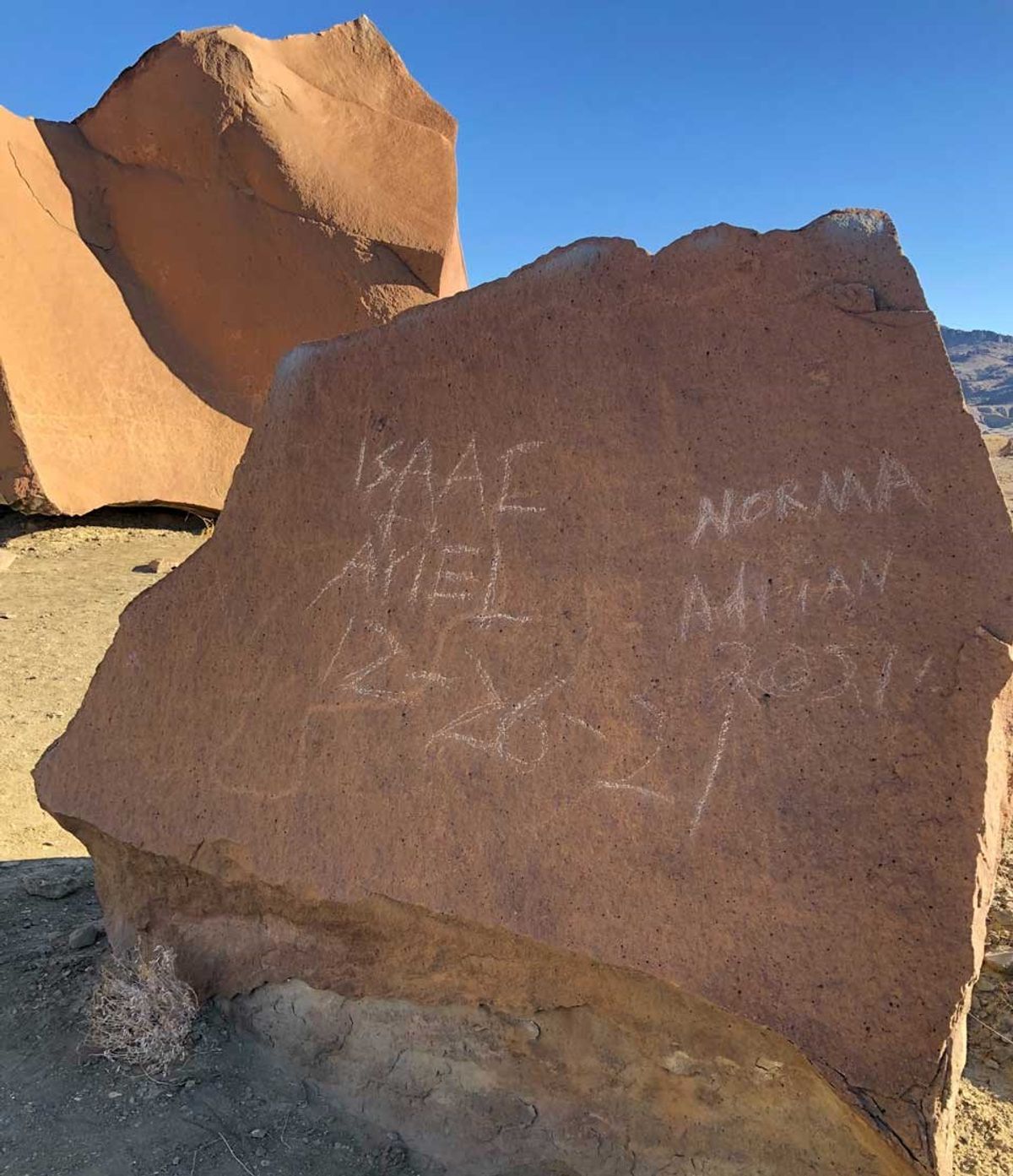An ancient petroglyph panel in Big Bend National Park, an 800,000-acre park teeming with archeological sites on the Texas-Mexico border, was vandalised last month amid an uptick in the defacement of national heritage sites. The panel is located in a remote area of the park known as Indian Head and thought to be between 4,000 and 8,500 years old; it was incised with several names and the date on 26 December, according to the National Park Service.
Archeologists working in Big Bend have documented more than 50 incidents of vandalism since 2015. Several sites throughout the park are not open to the public due to concerns around vandalism and the looting of artefacts by park visitors.
“Damaging natural features and rock art destroys the very beauty and history that the American people want to protect in our parks,” the park superintendent, Bob Krumenaker, said in a statement. “With each instance of vandalism, part of our Nation’s heritage is lost forever.”
The panel contains geometric forms, circles and undulating lines. Although it has been treated by professional conservators, most of the damage is permanent.
Archeological sites are protected under the Archeological Resources Protection Act, a 1979 federal statute that protects ancient cultural sites from being excavated or damaged and carries a fine of up to $20,000 or up to one year imprisonment for first time offenders. The statute was launched with the aim of reinforcing the Antiquities Act, an 1906 statute that protects monuments for cultural, historic or scientific purposes that is often disputed for being too vague in its wording.
Vandalising resources on federally protected land is also punishable by a $5,000 fine or imprisonment of less than six months under the 36 Code of Federal Regulations.
Over the last year, several archeological sites in national parks were damaged, including a panel known as Birthing Rock in eastern Utah that contains complex celestial observations, which was defaced with the words “white power” and other graffiti. And an ancient panel in Arches National Park, also in Utah, was permanently destroyed after a climber, who received death threats over the incident, installed several bolts in the sandstone.


